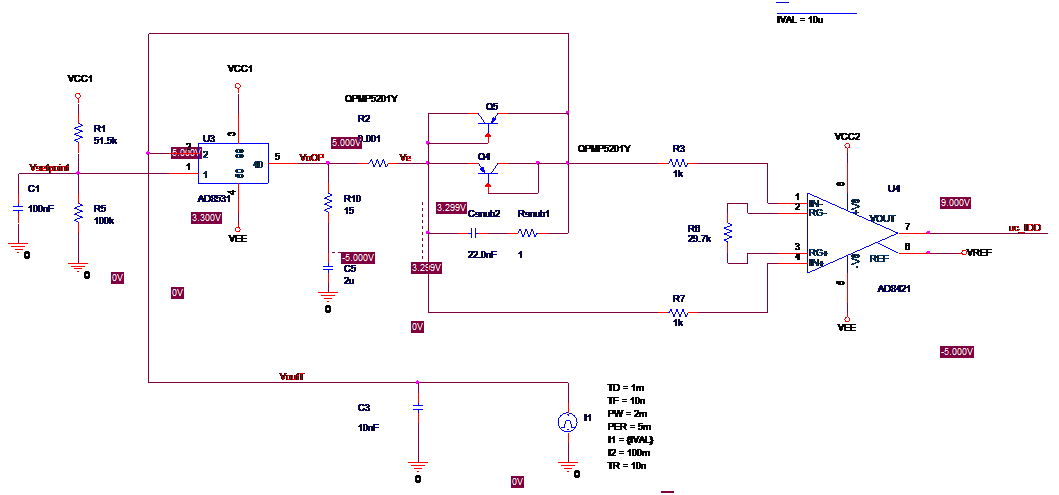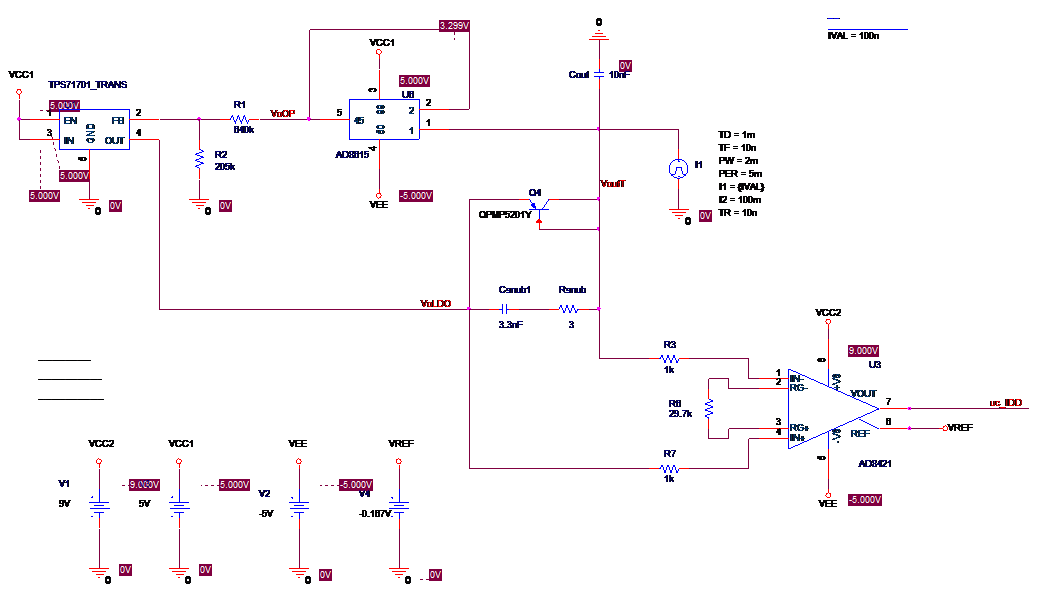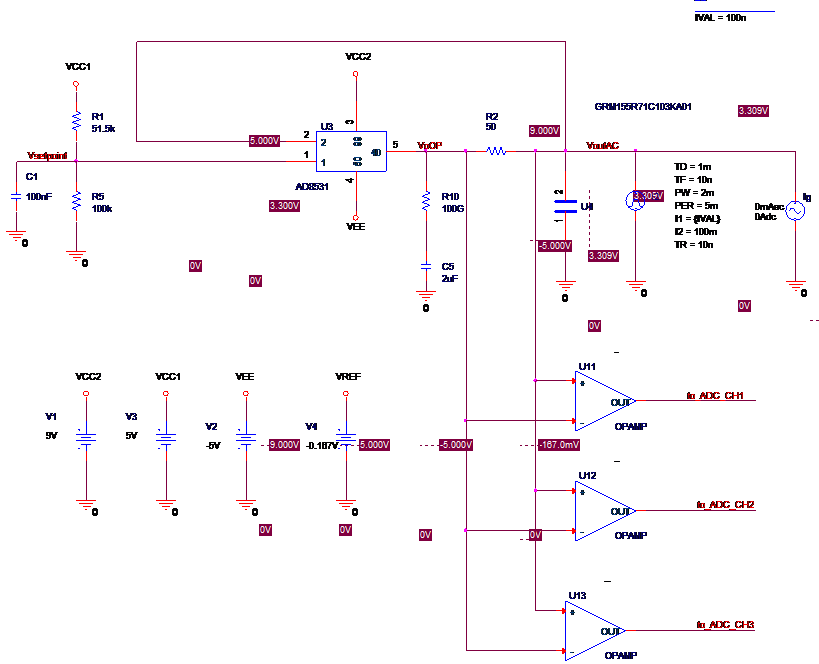Dear Engineers
Herein the description of my problem
I have to design a high side current monitor with the following specs:
6 decade log scale current measure: from 100nA to 100mA
1 MHz large signal bandwidth
10% of accuracy in the log scale
I need to measure the current which flows from a regulator to a microcontroller VCC pin (ARM core). Of course the microcontroller power pins is filter with a 10nF -100nF capacitor. The microcontroller can operate in power down mode Idd = 100nA up to 50-70mA operating current at full speed. The filter capacitor creates a lot of problems in the current measure as well has the wide current measure range and bandwidth.
I’m exploring different approach. For example:
A OP high speed power amp with a diode which acts as a log element (VBE and IS temperature an compensation is done with a different section of the circuit Q4, C5 are matched BJT and matched also with other BJT used in the compensation section of the circuit, not shown here)
In this case because the non linearity of the loop, it is impossible to get good dynamic performance with different current level. The ub_IDD signal is connected to a high speed 10 bit ADC
B ) Log element inserted in a closed high gain loop of and Linear regulator
Similar problems, difficult to get good dynamics performance because the presence of the out capacitor which creates ringing and of the Q4 diode (BJT) which is a not linear in a loop
So I decided to divide the problem in 2 sub problems:
A linear section which convert the current to a voltage, followed a group of different amplifier blocks connected in parallel with different gains to cover 6 decades (U11 gain =1, U12 gain = 10, U13 gain = 100 all High impedence, high speed OP amp).
The idea is shown below:
-
the presence of the output CAP U4 (10nF) which create an additional pole in Gloop (ringing), same as above, but now the non linear element is not present.
-
the wide range of the voltage drop on R2 (5uV to 5V), difficult to measure due to the input amp noise, howerver the temerature compensation of the non linear element is not anymere necessary
Do anybody suggest any other idea or any ready to use device?




